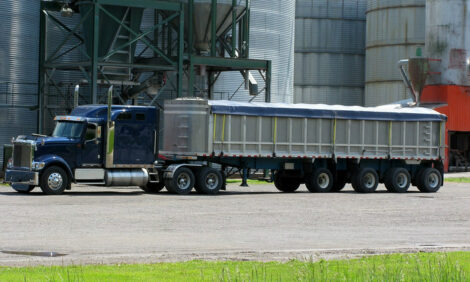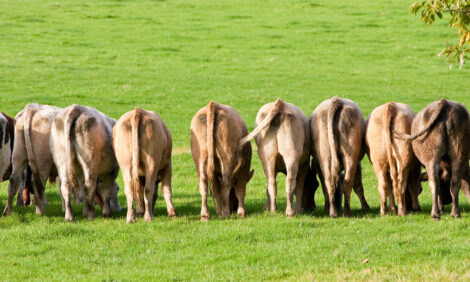



Factors To Consider When Marketing Cattle
CANADA - When it comes to marketing cattle, there are a lot of factors to be considered. The feeder cattle market is determined by supply and demand and is based on the buyer’s projection of the slaughter market price and the cost of gain of the feeder animal.
“Whether a producer is selling his own cattle, paying someone to do it or looking into the future - there is a market niche for every class of cattle produced,” says Ken Ziegler, beef specialist, Alberta Agriculture and Rural Development, Rocky Mountain House. “Each class of livestock will have a different price range as it relates to the current demand for that class.”
“Feeder cattle prices vary according to the frame size,” says Mr Ziegler. “Large and medium framed cattle typically are in more demand because of performance potential.”
A major factor in feeding cattle is the value of the finished carcase. Buyers look for grade, yields (dressing percentage) and marbling potential. They determine this by breed, conformation and frame size.
“Buyers often use colour to be more discriminating in what they buy,” says Mr Ziegler. “Premiums or discounts for breed and colour are due to perceived differences in performance and carcase characteristics. Condition refers to the amount of flesh that the animal is carrying."
“Buyer preference varies on weaned, pre-immunised and preconditioned animals. Some buyers prefer to purchase calves that are adapted to feed. Other buyers are willing to accept the risk of calves that have not been conditioned because they know exactly what they are buying. Producers should be sure that the market will pay a premium for preimmunised or preconditioned calves before incurring the additional costs. Backgrounded cattle are usually fed on a high roughage ration and offer a definite health advantage.”
Conditions of sale are any cost, direct or indirect, that improves or reduces the net return.
“The condition of sale that affects the bottom line the most is shrinkage,” says Mr Ziegler. “As cattle are handled, transported and sorted, they lose weight. Commission is direct cost for each animal sold and is either calculated as a percentage of the animal value or a set dollar per animal and can vary between markets.”
Freight can be negotiated either as FOB (free on board) the farm or FOB at the point of weighing. Feed and Yardage charges apply when cattle are fed on long journeys or overnight.
The sliding scale calculation is to adjust the price to the net weight of the cattle. For example, if an agreed price for a steer is $140.00 per cwt with a sliding scale of $0.05 at a shrunk weight of 600 lb, the price will need to be raised or lowered once the actual weight is determined.
“Feeder cattle prices are affected by supply and demand which is influenced by the general economic situation, the supply of feedstuffs and livestock futures,” adds Mr Ziegler. “Understanding the factors affecting the general trend of that market is the first step in determining how to best market your cattle.”
TheCattleSite News Desk


